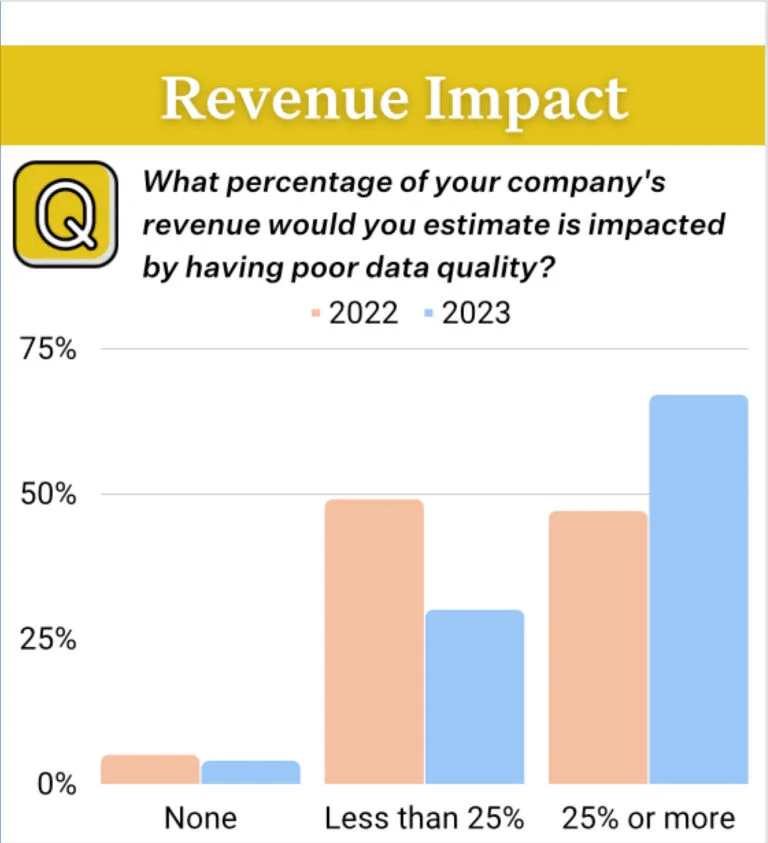How to Work With Raw Data and Transform It Into a Compelling Marketing Narrative
Raw data is a goldmine for businesses seeking to make informed decisions and gain a competitive edge. However, its true value lies not in its raw form, but in its ability to reveal meaningful insights that tell a compelling story. This is where the power of a well-crafted marketing narrative comes into play.
Businesses collect and use data in all its forms. Advertisements highlight information such as a product’s effectiveness in killing germs (e.g. our hand soap eliminates 99.9% of harmful germs after just 1 wash) while business content such as blog posts and ebooks use data to lend credence to their claims and opinions. However, finding this information and converting it into convincing marketing stories can be challenging if marketers don’t know where to look and how to start.
Finding insights amongst the clutter: The challenges of working with raw data
Modern businesses generate, store, and analyze a staggering amount of information. Amidst the sea of data, it can be challenging for marketers to identify and highlight the pieces of information that are more valuable than the rest. Here are some challenges that marketers face when working with large amounts of data.
1. Data quality and accuracy
Ensuring and maintaining quality can be a significant challenge for marketers. Incomplete or inaccurate data can lead to flawed analysis and unreliable insights. A recent survey showed that more than half of businesses reported at least 25% of their revenue is impacted by poor data quality. While marketers cannot resolve this issue without help from other departments within their organization, it’s critical that the data they use to make decisions is high quality and completely accurate.

2. Data integration and organization
Marketers often deal with disparate data sources that need to be integrated and organized to extract valuable insights. This can be time consuming and resource intensive — but it’s necessary. Incomplete or unorganized data can prevent marketers from making an informed decision by providing an incomplete representation of reality. LeadsPanda can help streamline this process for you.
3. Data privacy and security
Handling sensitive customer data requires strict adherence to data privacy regulations and robust security measures. Marketers must navigate privacy concerns and ensure ethical data handling practices to protect consumer data and earn their trust.
4. Data analysis and interpretation
Making sense of large volumes of raw data requires expertise in data analysis and interpretation. Identifying patterns, trends, and actionable insights within the data can be challenging for marketers who might not have the necessary training to understand what the raw data is showing.
5. Technical expertise and tools
The size of the global marketing technology market has grown consistently over the past decade, reaching a value of $325.7 billion in 2022. However, a variety of businesses are looking to capitalize on this gain, providing many specialized and highly specific tools for marketers with different needs. Utilizing the right tools and technologies for data analysis can be a challenge for marketers who may lack the technical expertise or resources to effectively leverage data-driven insights.

How to use data effectively when crafting a marketing narrative
Raw data has the potential to transform an ordinary advertising campaign to something that is truly engaging and effective. Marketers should use these tips to ensure they are extracting valuable insights from every piece of relevant data they have.
1. Tell a consistent story
Consistency in messaging, tone, and storytelling ensures that customers have a unified brand experience, regardless of the channel they engage with. This consistency builds familiarity, trust, credibility, and brand recognition among customers.
Pro tip: Use your marketing narrative to ensure that your ads across different social media platforms have the same takeaway despite having different ways of getting that message across.
2. Choose relevant data points
Select data points that are relevant to your narrative and support your key message. Avoid overwhelming your audience with excessive data — instead, focus on the most impactful and meaningful insights. Here are some important data points that marketers commonly use:
- Demographic data: This includes information such as age, gender, location, income, education, and occupation. Analyzing demographic data can help tailor the marketing narrative to specific target audiences.
- Behavioral data: Behavioral data consists of consumer actions like website visits, search queries, product interactions, and purchase history. Understanding consumer behavior can help shape the narrative around customer preferences and interests.
- Engagement data: Engagement data includes metrics like click-through rates, time spent on a webpage, social media likes/shares, and email open rates. Analyzing engagement data can indicate how well the marketing narrative is resonating with the target audience.
- Performance data: This includes insights on campaign performance, such as conversion rates, cost per acquisition, return on ad spend, and customer lifetime value. Performance data helps measure the effectiveness of the marketing narrative and identify areas for improvement.
- Market research data: Data from surveys, focus groups, and industry reports should be studied before creating your marketing narrative. Market research data provides insights into consumer preferences, trends, and competitors’ strategies, which can inform the marketing narrative.
3. Keep it clear and concise
Simplify complex data into easily understandable visualizations, graphs, and charts. Use clear and concise language to communicate your insights effectively. Make sure to share the appropriate information on each marketing channel. For example, product information and performance data are often successful on consumer-focused social media channels such as TikTok and Instagram, while sales data or industry information are more appropriate for professional platforms such as LinkedIn.
4. Use visuals
Visuals can greatly enhance the impact of your data-driven narrative. Utilize infographics, images, and videos to make your message more engaging and memorable.
Pro tip: Product data and company information can be shared on social media to improve engagement and share important updates but data in its raw form can be uninteresting. Infographics work well on image-focused social media platforms such as Instagram and Facebook while video-based ads can do well on LinkedIn and TikTok.
5. Provide context
Explain the significance of your data insights within a broader context. Help your audience understand how the data supports your marketing narrative and contributes to their understanding of the topic.
6. Customize your narrative style for each marketing channel
While using multiple outreach channels can help businesses reach a wide and diverse audience, marketers need to know where their audience is before they can optimize their outreach. Learning the narrative style that is dominant and effective on each channel can help marketers connect with their target audience more effectively. The most commonly used narrative styles on the most popular platforms are explained below:
- Text-based marketing channels: Certain newspaper and magazine ads and text-based social media platforms such as Twitter and Threads require marketers to be concise and direct in their messaging. Key data points must be highlighted in ways that are attention grabbing and interesting immediately.
- Image-based marketing channels: Marketing channels such as Instagram, out-of-home advertising, and image-first advertisements on print media require data to be shared in a visually appealing manner. Infographics are especially useful on these channels as they allow marketers to share a large amount of information while retaining customer attention with exciting visual elements in the advertisement.
- Video-based marketing channels: Video advertising allows marketers to share more information due to its length and ability to display different points of information in quick succession. However, marketers must display this data in a way that can hold customer attention. Websites such as YouTube gives users the power to skip certain ads while television viewers could choose to change channels or mute advertisements if they find them uninteresting.
- Audio-based marketing channels: Audiobooks and podcasts have gained popularity in recent years but marketers have been customizing their data for audio marketing since the glory days of the radio. Once marketers have decided what they wish to highlight to their listeners, they can choose the important data points that will help to back up their narrative. For example, customer testimonials are extremely important for vox pop-style advertisements while pricing information is more useful in a sales or promotion advertisement.
7. Be transparent and authentic
Present data honestly and transparently and avoid manipulating it to fit a desired outcome, as this can undermine trust and credibility. When marketers are authentic, they convey a genuine and honest representation of their brand, products, and values. This authenticity is crucial in today’s consumer landscape where customers value authenticity and are more likely to support brands that align with their values.
A recent survey found that 86% of Americans believe that transparency from businesses is more important now than ever before, while almost three-quarters of customers are willing to pay more for products from companies that they view as transparent and trustworthy.

Make the most of your marketing data today
To create compelling, data-driven marketing narratives, marketers must create a unified view of campaigns across different channels such as search, social, display, and e-commerce, allowing marketers to manage, optimize, and measure performance from a single place.
At LeadsPanda we can help you create compelling marketing narratives with quality content and creatives. To get started, schedule a call today.
Share This Story
2 Comments
Leave A Comment
Get the latest growth ideas, strategies, and best practices delivered to your inbox.
Quick read that helps 7000+ subscribers.










[…] For more insights into how to tactically leverage Google Analytics metrics, read How to Work With Raw Data and Transform It Into a Compelling Marketing Narrative. […]
Helllo to all, the contents prsent aat thiis site are genuinely amazing for people knowledge, well, keep up the good work fellows.